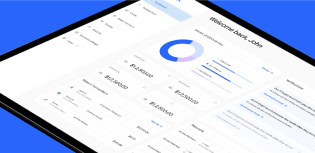The ROI of scaling finance operations with PEX

Hard truth: no one talks about ROI in finance operations. But that’s starting to change.
Finance operations are like the roadways inside a business: their job is to keep traffic moving. As long as finance pays the bills and closes the books each month, it’s considered a success. Even if it was a bumpy ride with costly detours.
Today, that standard isn’t enough. Growth is faster, teams are leaner and every dollar spent is under greater scrutiny from leadership. Finance leaders can’t afford clogged lanes or blind spots in how money moves through the business.
Advances in automation and AI are shifting finance from a back-office function to a measurable business driver. Modern spend management platforms make it possible to run leaner, smarter operations that directly impact the bottom line.
So what does expense management ROI really look like? To answer that, finance leaders need to look beyond dollars saved.
Defining ROI in finance operations
When most business leaders talk about ROI, the formula is simple: I put in X, and I get out Y. A clear investment, a clear return. In finance operations, ROI extends beyond dollars saved to include reclaimed time, stronger liquidity and reduced staffing needs. Those returns show up in both hard dollars and strategic gains.
Hard ROI: measurable financial impact
- Time savings: Automating manual finance tasks reclaims hundreds of hours each year. Less time spent on repetitive workflows translates directly into labor cost reductions
- Increased liquidity: Stronger spend controls and smarter payment methods, (like virtual cards for businesses) preserve cash flow. Rebates and fewer errors preserve cash flow for the business
- Reduced headcount costs: Efficiency gains allow finance teams to handle higher volumes without hiring additional staff. Avoiding recruiting, training and salary expenses keeps payroll lean
Soft ROI: strategic returns
- Employee satisfaction and retention: Reducing repetitive tasks lowers burnout and keeps finance staff focused on meaningful work, helping retain talent in a competitive market
- Risk reduction: Fewer errors minimize compliance risk and audit stress, strengthening trust with boards, investors and regulators
- Scalability: Efficiency gains let finance leaders support growth without adding staff, ensuring finance doesn’t become a bottleneck as transaction volumes rise
Whether it’s hard dollars or soft returns, ROI depends on having a benchmark. To prove it, finance leaders first need to measure.
Measuring ROI from expense automation
The first step in proving ROI is establishing a baseline. Before you can show improvement, you need a clear picture of your starting point. In finance operations, that baseline comes from understanding the real costs of your current workflows.
- How many hours does expense reporting, reconciliation and coding take your team each month or quarter?
- What errors did you document during that time? What were the consequences, including rework, delays, fines or audit findings?
- How much cash flow is tied up or lost due to slow reimbursements, delayed reconciliations, unauthorized spend or inefficient payment methods?
- When do you need to hire another team member based on today’s workload, and what would that cost in salary, training and overhead?
To make your baseline stronger, don’t just look at the current reporting cycle. Pull comparable data for the same period a year ago. This cyclical view accounts for seasonal peaks and valleys, and gives you a truer benchmark for measuring progress.
After launching an automated spend management program, track these same metrics on an ongoing basis. Compare the new results against your baseline, minus the cost of your new software. That’s your ROI: measurable proof that finance operations are driving tangible returns for the business.
How PEX drives measurable ROI
Once you know your baseline, the question becomes: what kind of platform can move the needle? Here’s how PEX turns those ROI levers into measurable results.
Time savings
PEX automates the most time-consuming finance tasks from chasing receipts to monthly reconciliation. Tasks that once took hours now run automatically, freeing finance to focus on strategic work.
Here’s how PEX drives those efficiencies:
- Centralized expense management: Finance teams manage all expenses in one place, including personal reimbursements. Pre-built integrations auto-sync expense data with accounting software, keeping records up-to-date without extra effort
- Automated receipt capture: Employees upload receipts instantly via text, email or the PEX mobile app. The platform reminds cardholders to submit receipts and blocks cards until they comply, cutting down finance team intervention
- AI-powered suggestions: The system uses machine learning to match receipts, recommend GL codes and flag potential errors before they slow down the close. Teams can approve transactions with one click instead of spending hours on manual reviews
The payoff is significant: with these capabilities, finance teams save an average of 657 hours each year: the equivalent of more than $35,000 in labor costs.
Increased liquidity
Liquidity is the lifeblood of a growing business. Manual processes, unauthorized spend and preventable errors can drain cash reserves. PEX improves liquidity by giving finance leaders tighter control over outflows. And it turns everyday payments into opportunities to strengthen cash reserves.
Here’s how PEX drives those results:
- Automated spend controls & approvals: The system enforces policies in real time, flagging or blocking out-of-policy transactions before they impact cash flow. Built-in approval workflows ensure purchases get reviewed at the right level before funds are released. Finance leaders see fewer surprises at month-end and preserve dollars that would otherwise be lost.
- Virtual, physical and prepaid card options: Companies issue cards instantly to employees or vendors, earning 1% back on eligible spend. By routing expenses like insurance, travel and utilities through the platform, businesses generate rebates that boost liquidity without changing their spending behavior.
- Smart coding and compliance: Pre-programmed GL code mapping, auto-syncing transactions and AI-powered data checks keep expense data consistent across systems. Fewer mistakes mean fewer regulatory fines and costly rework, all of which protect cash reserves.
The impact is clear: by combining these features, finance leaders preserve cash flow to reinvest in growth. In fact, PEX customer Artisan Capital Group freed up $150,000 in cash reserves by automating spend and leveraging controls.
Reduced headcount costs
The same efficiencies that save time and protect liquidity also reduce hiring needs. With automation handling repetitive tasks, controls keeping spend in check and fewer errors triggering last-minute fire drills, existing finance teams can manage higher volumes without adding staff. Avoiding recruiting, training and salary expenses keeps the team lean.
Scaling finance operations as a growth driver
Finance operations are no longer just about keeping the wheels turning. With automation, finance leaders can prove real ROI, from hours saved and cash preserved to avoiding the cost of new hires. PEX customers are learning this firsthand:
- Southwestern Healthcare increased finance efficiency by 95%
- Family in Christ Community Church cut monthly reconciliation time from 5 hours to 20 minutes
- Bluebridge Alliance saved 40 hours per month on bookkeeping
Each example shows how smarter finance operations turn into measurable returns.
Ready to see what this could look like for your team? Contact PEX today for a customized demo.
Similar resources
Opinions, advice, services, or other information or content expressed or contributed here by customers, users, or others, are those of the respective author(s) or contributor(s) and do not necessarily state or reflect those of The Bancorp Bank, N.A. (“Bank”). Bank is not responsible for the accuracy of any content provided by author(s) or contributor(s).











